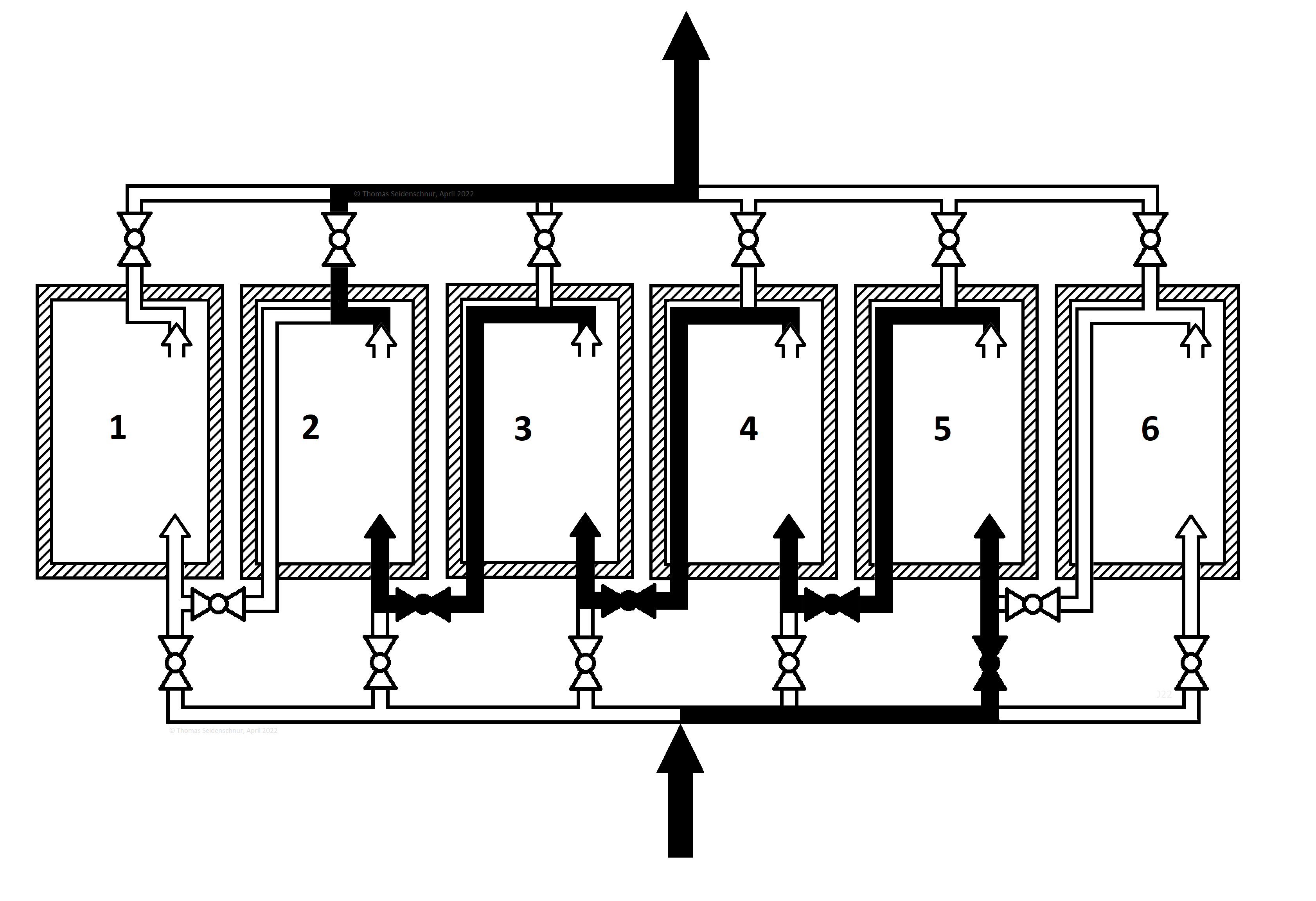Operating Modes of the New Thermo Storage Technology
The key point of the New thermal storage technology is, in addition to the simultaneous charging and discharging, the flexible interconnection of the modules each other, which makes it possible- Efficiently distributing and storing of strongly fluctuating energy flows, and
- using stored thermal energy at a low temperature level for reconversion, because
- Modules can have different, individual temperatures that
- If necessary, flow through them one after the other and thus
- Lead a gradual change in temperature of the gas stream.
The activation or deactivation and the order in which the heating medium flows through the individual modules is controlled electronically and automatically with valves. Temperature gauges on each module are linked to a central electronic controller which operates valves to control the flow paths to and between the modules
Why is this necessary? Subsequent heat engine for reconversion require a minimum temperature. The higher the temperature, the higher the efficiency. It is useless if all modules of the heat storage have a temperature of 450°C, for example. It is better if at least one hot module quickly reaches 600°C and another initially only 300°C.

 ]
]








